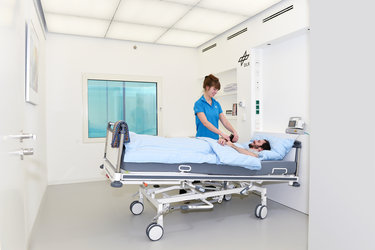Accept all cookies Accept only essential cookies See our Cookie Notice

About ESA
The European Space Agency (ESA) is Europe’s gateway to space. Its mission is to shape the development of Europe’s space capability and ensure that investment in space continues to deliver benefits to the citizens of Europe and the world.
Highlights
ESA - United space in Europe
This is ESA ESA facts Member States & Cooperating States Funding Director General Top management For Member State Delegations European vision European Space Policy ESA & EU Space Councils Responsibility & Sustainability Annual Report Calendar of meetings Corporate newsEstablishments & sites
ESA Headquarters ESA ESTEC ESA ESOC ESA ESRIN ESA EAC ESA ESAC Europe's Spaceport ESA ESEC ESA ECSAT Brussels Office Washington OfficeWorking with ESA
Business with ESA ESA Commercialisation Gateway Law at ESA Careers Cyber resilience at ESA IT at ESA Newsroom Partnerships Merchandising Licence Education Open Space Innovation Platform Integrity and Reporting Administrative Tribunal Health and SafetyMore about ESA
History ESA Historical Archives Exhibitions Publications Art & Culture ESA Merchandise Kids Diversity ESA Brand CentreLatest
Space in Member States
Find out more about space activities in our 23 Member States, and understand how ESA works together with their national agencies, institutions and organisations.
Science & Exploration
Exploring our Solar System and unlocking the secrets of the Universe
Go to topicAstronauts
Missions
Juice Euclid Webb Solar Orbiter BepiColombo Gaia ExoMars Cheops Exoplanet missions More missionsActivities
International Space Station Orion service module Gateway Concordia Caves & Pangaea BenefitsLatest
Space Safety
Protecting life and infrastructure on Earth and in orbit
Go to topicAsteroids
Asteroids and Planetary Defence Asteroid danger explained Flyeye telescope: asteroid detection Hera mission: asteroid deflection Near-Earth Object Coordination CentreSpace junk
About space debris Space debris by the numbers Space Environment Report In space refuelling, refurbishing and removingSafety from space
Clean Space ecodesign Zero Debris Technologies Space for Earth Supporting Sustainable DevelopmentLatest
Applications
Using space to benefit citizens and meet future challenges on Earth
Go to topicObserving the Earth
Observing the Earth Future EO Copernicus Meteorology Space for our climate Satellite missionsCommercialisation
ESA Commercialisation Gateway Open Space Innovation Platform Business Incubation ESA Space SolutionsLatest
Enabling & Support
Making space accessible and developing the technologies for the future
Go to topicBuilding missions
Space Engineering and Technology Test centre Laboratories Concurrent Design Facility Preparing for the future Shaping the Future Discovery and Preparation Advanced Concepts TeamSpace transportation
Space Transportation Ariane Vega Space Rider Future space transportation Boost! Europe's Spaceport Launches from Europe's Spaceport from 2012Latest
Female Bedrest Study Preview
In February 2005, 24 women, all carefully selected volunteers, will remain in bed, with their head slightly tilted down, for as long as two month. Not being an astronaut, this is the closest one can get to experiencing the effects of long-term space missions in the organism and develop counter-measures that will help prevent the loss of bone mass, muscular atrophy or changes in the cardio-vascular system, All are necessary improvements, if the human machine is to match ESA plans for interplanetary travel and missions to Mars that could take ut pto 3 years.
This programme provides pre-event footage for this female bed rest study, including location recordings at the MEDES space clinic, soundbites with ESA and CNES experts and images of women on board the ISS.
No Gen 1. Digi Beta tape missing. Ingrid has 1 Gen 2 copy, but no original.
FEMALE BED REST STUDY PREVIEW
TC: 10 00 41
Smiling faces enjoying hard work in space. Everybody is well trained and in good health.
But we know from past missions that long-term exposure to weightlessness induces
physiological changes that strongly affect astronautsÕ health and performance. Maybe
because space is still largely male-dominated.. MEN have been the object of most
scientific studies on these phenomena. Little is known so far about how the female body
reacts to the prolonged absence of gravity. But that is about to changeÉ
TC: 10 01 16
At the end of February 2005, 24 women, all carefully selected volunteers, will remain in
bed, with their head slightly tilted down, at an exact -6 degree angle with the horizontal,
for as long as two months. They are not allowed to sit up for even a second. Not being an
astronaut, this is the closest one can get to experiencing the effects of long-term space
missions in the organism and develop counter-measures that will help prevent the loss of
bone ma
-
CREDIT
ESA -
LICENCE
ESA Standard Licence
-
Documentary
-
-
-
-
-

Female volunteer in dry immersion study

Bedrest

Bedrest study

Vivaldi III logo














 Germany
Germany
 Austria
Austria
 Belgium
Belgium
 Denmark
Denmark
 Spain
Spain
 Estonia
Estonia
 Finland
Finland
 France
France
 Greece
Greece
 Hungary
Hungary
 Ireland
Ireland
 Italy
Italy
 Luxembourg
Luxembourg
 Norway
Norway
 The Netherlands
The Netherlands
 Poland
Poland
 Portugal
Portugal
 Czechia
Czechia
 Romania
Romania
 United Kingdom
United Kingdom
 Slovenia
Slovenia
 Sweden
Sweden
 Switzerland
Switzerland


























